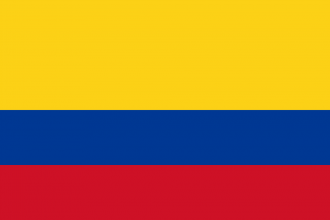Colombian armed forces have gone through an important modernization process over the last couple of decades. The constantly increasing demands to counter guerilla warfare operations in the interior of the country and the significant upgrade of the air capabilities of other countries in the region have paved the way for the gradual renewal of the Colombian Air Force’s ageing fleet and the modernization of several other defence assets. In order to assist this modernization process, Colombia’s military expenditure has grown rapidly. It is indicative that over the last 15 years, military spending by the country has increased more than twofold. According to budgetary documentation published by Colombian government, the Defence Budget for 2016 was some 28.92 trillion Colombian Pesos (COP) (approximately 9.95 billion US dollars), while in contrast the 2000 defence expenditure amounted to merely 12.7 trillion COP (approximately 4.37 billion US dollars).
Nevertheless, it should be stressed that despite the fact that the Colombian defence spending is rising, the ratio between operational costs and the costs of procuring new equipment is decreasing, leaving the Armed Forces with a smaller amount of funds for the materialisation of large-scale military acquisition programs. It is indicative that in the period 1999-2002, on average, Colombia spend 12.38 trillion COP (approximately 4.3 billion US dollars) per year or 90% of the total defence expenditure, for covering the salaries and day-to-day operational expenses of military personnel, maintenance costs, etc., while 1.37 trillion COP (approximately 0.47 billion US dollars) or 10% of the total defence expenditure were allocated to the procurement of new equipment. In 2016 on the other hand, 96.4% of the defence budget was allocated to operational costs, while only 3.6% to the procurement of new defence assets.
Historically, the Colombian Army receives the highest allocation of the defence budget. It is indicative that in 2015, the Army received some 25.54%, the Navy 6.08% and the Air Force 5.31% of the total defence expenditure for the year, with the remainder of the funds being consumed by other activities, bodies and organisations (such the National Police, the Central Command, the Ministry of Defence, for the provision of Health Services, etc).
As was aforementioned, Colombia has extensively modernised its armed forces throughout particularly the last decade. In order to achieve this, the country depends heavily on defence imports, as the indigenous defence industry until recently was able to produce a wide, but not technologically advanced, range of military products. Under this context, Colombia ordered from the US between 2005 and 2013, a total of 44 UH-60L Blackhawk Helicopters, engines and associated support, all of which had been delivered by 2014. Additionally, the country procured a total of 6 C-295 transport aircraft from Spain since 2008 and updated 11 Israeli Kfir C-7 fighter aircraft, to Kfir C-10 level, by December of 2015. Finally, Colombia ordered from Brazil in 2005, 25 EMB-314 Super Tucano light attack & counter-insurgency aircraft, an enhanced version with greater speed and higher altitude than the EMB-312 Tucano trainer aircraft. The total amount of the procurement was 235 million US dollars. The deliveries of the airplanes started in 2006 and completed in 2008. The funds for the procurement were allocated from a loan approved by Brazilian Banks.
With the aforementioned procurements, Colombia has managed to significantly improve the capability of its armed forces, particularly as far as the performance of assault/counter-insurgency operations and the air transportation of troops and equipment, especially in areas which are difficult to access by other means.
At the same time, the Colombian Armed Forces continue to explore possibilities of introducing modern systems in their arsenal, considering always the particular operational and geographical needs involved, and the strategic objective of developing the local defence industry, by introducing an ‘attractive’ defence acquisitions environment, thus opening the way for interested parties.
UAV systems, as is also the trend worldwide, are a key area of interest for Colombia’s Armed Forces. With the involvement of the local industry, there are several ongoing efforts to develop capable unmanned aerial systems domestically, in order to meet the special operational needs of the armed forces, while also be appropriate for the particular terrain characteristics of Colombia.
Given Colombia is a large and quite mountainous territory, covered to a large extent also by dense tropical rainforests, it is logical that the national defence and security authorities focus on procuring equipment and materiel that will help them patrol effectively by air or via the complex river network, the difficult to navigate parts of the country.

